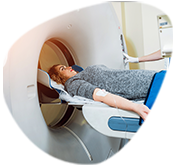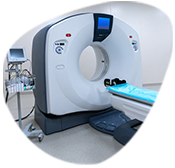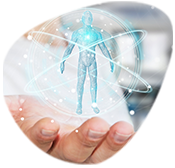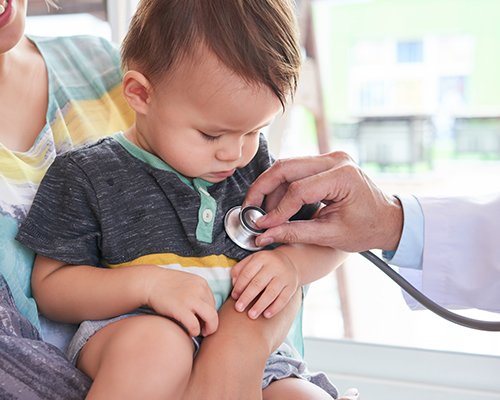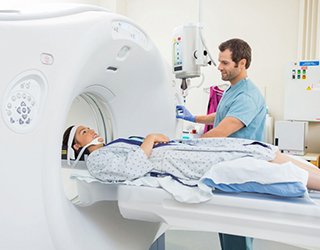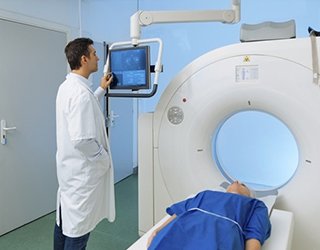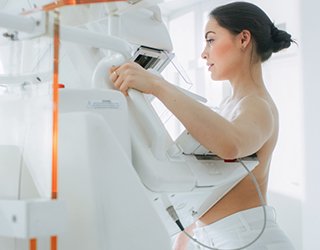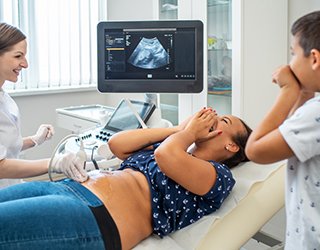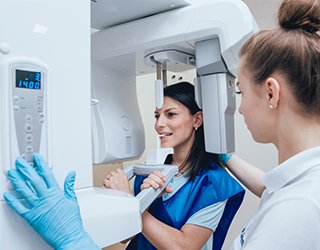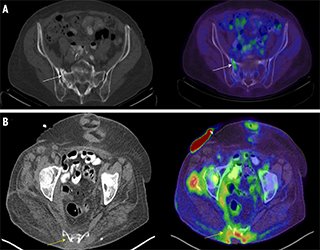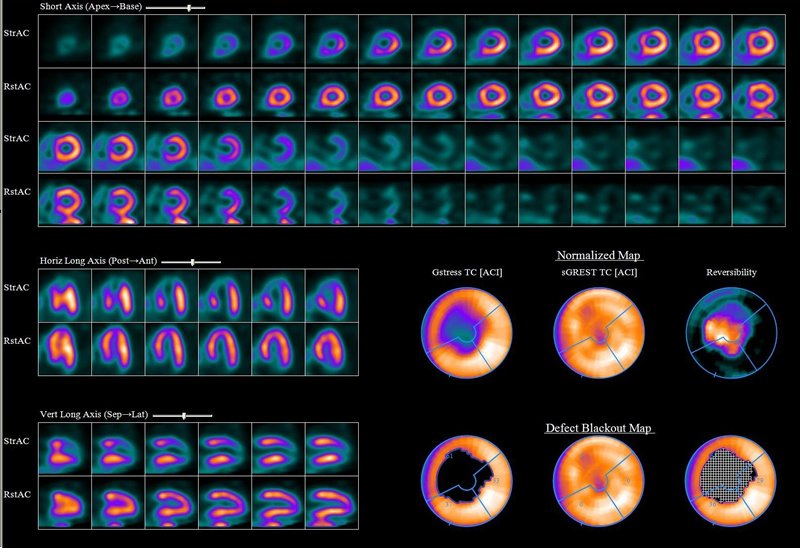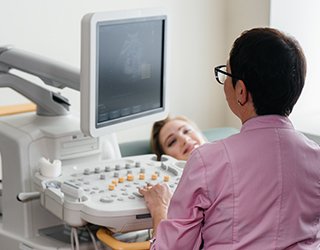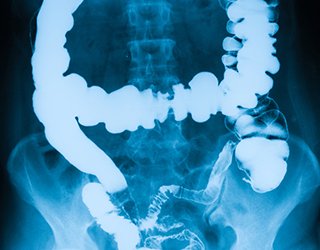Ultrasound-Guided Breast Biopsy
- Home>
- Ultrasound-Guided Breast Biopsy
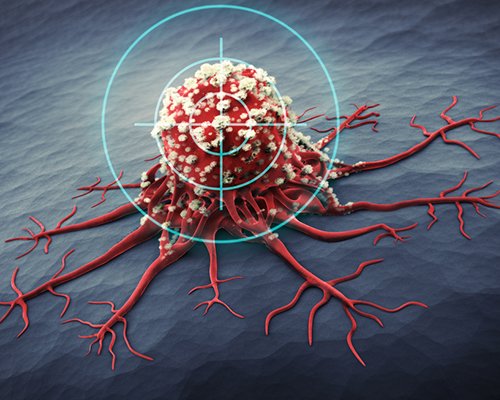
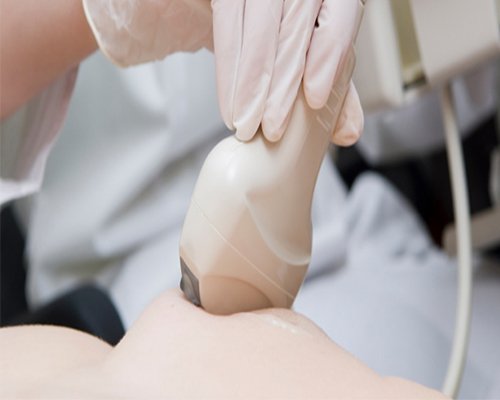
Lumps or abnormalities in the breast are often detected by physical examination, mammography, or other imaging studies. However, it is not always possible to tell from these imaging tests whether a growth is benign or cancerous.
A breast biopsy is performed to remove some cells—either surgically or through a less invasive procedure involving a hollow needle—from a suspicious area in the breast and examine them under a microscope to determine a diagnosis. Image-guided needle biopsy is not designed to remove the entire lesion, but most of a very small lesion may be removed in the process of biopsy.
Image-guided biopsy is performed by taking samples of an abnormality under some form of guidance such as ultrasound, MRI or mammographic guidance.
In ultrasound-guided breast biopsy, ultrasound imaging is used to help guide the radiologist's instruments to the site of the abnormal growth.
A breast biopsy is performed to remove some cells—either surgically or through a less invasive procedure involving a hollow needle—from a suspicious area in the breast and examine them under a microscope to determine a diagnosis. Image-guided needle biopsy is not designed to remove the entire lesion, but most of a very small lesion may be removed in the process of biopsy.
Image-guided biopsy is performed by taking samples of an abnormality under some form of guidance such as ultrasound, MRI or mammographic guidance.
In ultrasound-guided breast biopsy, ultrasound imaging is used to help guide the radiologist's instruments to the site of the abnormal growth.
You should wear comfortable, loose-fitting clothing for your ultrasound exam. You may need to remove all clothing and jewelry in the area to be examined.
You may be asked to wear a gown during the procedure.
Prior to a needle biopsy, you should report to your doctor all medications that you are taking, including herbal supplements, and if you have any allergies, especially to anesthesia. Your physician will advise you to stop taking aspirin or a blood thinner three days before your procedure.
Also, inform your doctor about recent illnesses or other medical conditions.
You may want to have a relative or friend accompany you and drive you home afterward. This is recommended if you have been sedated.
You may be asked to wear a gown during the procedure.
Prior to a needle biopsy, you should report to your doctor all medications that you are taking, including herbal supplements, and if you have any allergies, especially to anesthesia. Your physician will advise you to stop taking aspirin or a blood thinner three days before your procedure.
Also, inform your doctor about recent illnesses or other medical conditions.
You may want to have a relative or friend accompany you and drive you home afterward. This is recommended if you have been sedated.
- For a study of the liver, gallbladder, spleen, and pancreas, you may be asked to eat a fat-free meal on the evening before the test and then to avoid eating for eight to 12 hours before the test.
- For ultrasound of the kidneys, you may be asked to drink four to six glasses of liquid about an hour before the test to fill your bladder. You may be asked to avoid eating for eight to 12 hours before the test to avoid gas buildup in the intestines.
- For ultrasound of the aorta, you may need to avoid eating for eight to 12 hours before the test.
You will be awake during your biopsy and should have little or no discomfort. Most women report little or no pain and no scarring on the breast.
When you receive the local anesthetic to numb the skin, you will feel a slight pin prick from the needle. You may feel some pressure when the biopsy needle is inserted. The area will become numb within a short time.
You must remain still while the biopsy is performed.
As tissue samples are taken, you may hear clicks from the sampling instrument.
If you experience swelling and bruising following your biopsy, you may be instructed to take an over-the-counter pain reliever and to use a cold pack. Temporary bruising is normal.
You should contact your physician if you experience excessive swelling, bleeding, drainage, redness or heat in the breast.
If a marker is left inside the breast to mark the location of the biopsied lesion, it will cause no pain, disfigurement or harm.
You should avoid strenuous activity for 24 hours after the biopsy. After that period of time, you will usually be able to resume normal activities.
When you receive the local anesthetic to numb the skin, you will feel a slight pin prick from the needle. You may feel some pressure when the biopsy needle is inserted. The area will become numb within a short time.
You must remain still while the biopsy is performed.
As tissue samples are taken, you may hear clicks from the sampling instrument.
If you experience swelling and bruising following your biopsy, you may be instructed to take an over-the-counter pain reliever and to use a cold pack. Temporary bruising is normal.
You should contact your physician if you experience excessive swelling, bleeding, drainage, redness or heat in the breast.
If a marker is left inside the breast to mark the location of the biopsied lesion, it will cause no pain, disfigurement or harm.
You should avoid strenuous activity for 24 hours after the biopsy. After that period of time, you will usually be able to resume normal activities.
Other Guidlines


